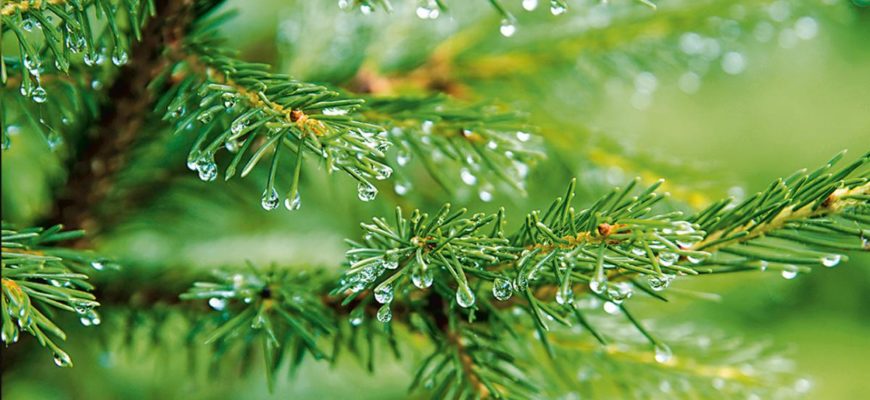
Find out more about the Scots Pine plant of our Aromatherapy Herbarium blog series.

SCOTS PINE
Pinus sylvestris
DESCRIPTION

Scots pine (Pinus sylvestris) is a tree of the Pinaceae family with ochre-brown bark, that grows throughout Europe and even Syberia.
ADVICE
Essential oil of Scots pine must be applied diluted to the skin.
DO NOT USE IN
– pregnant or breast-feeding women,
– children under the age of six years,
– persons allergic to one of the components,
– subjects with asthma without the advice of an allergologist before the first use,
– persons suffering from functional kidney failure (monoterpenes) or with a history of kidney disease.
RECIPES
Respiratory allergy
Apply 3 drops of pure essential oil of Scots pine to the lower back, around the kidneys, adrenal glands, chest and solar plexus each morning and noon for eight days.
Air cleansing during the winter
Diffuse a few drops of essential oil of Scots pine for 10 minutes each hour.
Chill
5 drops of EO of Scots pine, 5 drops of EO of ravintsara.
Mix the two essential oils in a teaspoon of powdered milk or neutral base for the bath. Pour into a hot bath (no more than 37 °C); stay in the bath for fifteen minutes.
ENT sphere decongestion
Inhale 3 drops of essential oil of Scots pine in a bowl of hot, non-boiling water. Cover your head with a towel and breath in the fragrant vapours.

This tree can grow to a height of forty metres and live for up to five hundred years. Its leaves are small needles grouped in pairs with a common seed at their base. The flowers are located at the base of the branches for male trees, or at their ends for female trees. The fruit are elongated cones, smaller than those of the pinaster, that open to release seeds with wings.
Humans and pine trees have a long common history: an offering table dating back to 2265 BC, exposed at the Louvre museum, mentions Cilicia pine oil, or hatet-âch. In mythology, the great goddess Cybele changed the young and handsome Phrygian Atys into a pine and, in medicine, Hippocrates prescribed pine resin against pneumonia. Arabic physicians recommended its use against “lung ulcers”, an expression which may have referred to tuberculosis. As the tree is very widespread, the cure was inexpensive: in the “Edict of Maximum” (301 AD), pine resin was estimated at twenty denerii per pound, i.e. five times less than Arabian saffron. “Old wives’ medicine” recommended inhaling a decoction of buds to treat cold or sinusitis and gargling it to treat laryngitis. Both poets and authors have praised the legendary beauty of pine.
CULTIVATION AND PRODUCTION
The various species of pine (Aleppo pine, Scots pine, Laricio pine, Pinaster, etc.), are widespread throughout France, Germany, Austria, Poland, Russia and America. Its main uses are carpentry, paper (pulp) and turpentine production.
FRAGRANCE
Essential oil of Scots pine exhales a fine and fresh forest scent.
EXTRACTION AND YIELD
Essential oil of Scots pine is obtained by total steam distillation of the needles. Yield varies, according to the altitude and age of the tree, between 0.1 and 0.2%, i.e. one to two hundred grams from one hundred kilograms of plant.
CHEMICAL FORMULA
The main active constituents of essential oil of Scots pine are monoterpenes (alpha and beta-pinenes, camphor, delta-3-carene, limonene, myrcene), terpene esters (bornyl ester) and sesquiterpenes.
MAIN INDICATIONS
Essential oil of Scots pine is a potent respiratory antiseptic, active against bronchitis. A tonic and stimulant, it acts as a decongestant (lymphatic system and uterine-ovarian sphere) and as a cortisone-like (it has an effect similar to that of cortisone).


Leave a Comment